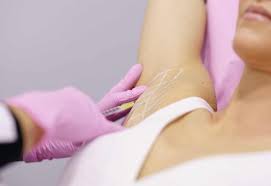Botox is a neurotoxin and can cause side effects. These can range from mild to severe. They can include headaches, nausea, and constipation. These side effects should subside within a few days. Patients may also suffer from paralysis or numbness in the areas treated. In some cases, patients may also experience compensatory sweating.
Table of Contents
Upper respiratory tract infection
One of the most common Botox treatment side effects is an upper respiratory tract infection. The infection can be mild, but it is important to consult a physician if it is severe. You should not stop using Botox if you develop an infection. It is also important to discuss other treatment options with your doctor. Other side effects of Botox include an injection site reaction. These side effects usually go away within a few days.
Some people may develop an allergic reaction to Botox. In this case, an over-the-counter antihistamine may help. You should also notify your doctor if you experience severe allergic reactions. An over-the-counter antihistamine may help you manage these symptoms, but a serious allergic reaction may require emergency medical care.
Lower urinary incontinence
Although Botoxcost is approved for the treatment of hyperhidrosis, it can also cause urinary incontinence. In a study, it was found that one in every five patients had lower urinary incontinence after Botox injections. Botox injections work by temporarily paralyzing muscle contractions in the bladder. The FDA has approved Botox for this use, but you should discuss the risk of incontinence with your physician before undergoing this treatment.
A clinical trial is underway at UC San Diego’s Women’s Pelvic Medicine Center to see if Botox can help with urinary incontinence. Researchers have shown that about 80 percent of people with this condition see improvement within a week, with results lasting four to nine months. A local numbing gel is used during the procedure, and about 15 to 20 injections are used to target the problem area.
Texting impairment
One teenager in the United States recently had best dermatologist injections for excessive sweating in her palms. Unfortunately, the treatment resulted in muscle weakness, and the girl could no longer text well. This is a common side effect of Botox treatments. While most people are happy to trade off hand weakness for the potential cure of excessive sweating, it is a risk that patients should understand.
Bruising
Bruising is a common side effect of Botox injections for hyperhidrosis. While this side effect is usually minor, it should still be considered when choosing a treatment plan for your condition. To minimize the risk of bruising, you should avoid certain medicines and avoid intense activity for at least a week after your injection. In addition, you should avoid taking any over-the-counter products for a week prior to the injection. Instead, you can take acetaminophen or fish oil.
Although Botox in Mumbai is a viable treatment for hyperhidrosis, it should only be used for those cases when other treatments are not effective. People with hyperhidrosis should consult with their dermatologist to determine which treatment option is best for them. Although Botox is not a permanent cure, it can reduce underarm sweating in about 50 percent of cases. However, if repeated injections are not performed, the symptoms will gradually return. Depending on the severity of the condition, patients may require repeat injections as often as two to three times a year.
Infection at the injection site
Botulinum toxin type an injections are a safe, rapid, and effective treatment for axillary primary hyperhidrosis. Patients report increased satisfaction, decreased sweating, and increased comfort in social situations. The procedure is relatively inexpensive and is not prone to serious side effects. However, it is important to discuss any possible risks with your doctor before scheduling an appointment.
Conclusion
Doses for Botox for hyperhidrosis should be determined based on the type and location of hyperhidrosis. A typical dose for axillary hyperhidrosis is 50-100 units per axilla. However, in clinical trials, doses of up to 400 units have been reported. One case series, the case series, used 300-500 units of Botox. Although there were no reported adverse events, dosages over 600 units may pose a serious complication.

